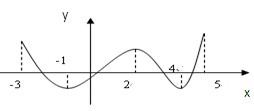题目内容
函数 的单调递增区间是( )
的单调递增区间是( )A.(2kπ-
 π,2kπ-
π,2kπ- )(k∈Z)
)(k∈Z)B.(2kπ-
 ,2kπ+
,2kπ+ )(k∈Z)
)(k∈Z)C.(2kπ-
 ,2k
,2k )(k∈Z)
)(k∈Z)D.(kπ-
 ,k
,k )(k∈Z)
)(k∈Z)
【答案】分析:利用三角函数的恒等变换化简函数的解析式为 tan( +
+ ),令 kπ-
),令 kπ- <
< +
+ <kπ+
<kπ+ ,k∈z,求得x的范围,可得函数的增区间.
,k∈z,求得x的范围,可得函数的增区间.
解答:解:由于函数 =
= =
=
= =
= =tan(
=tan( +
+ ),
),
令 kπ- <
< +
+ <kπ+
<kπ+ ,k∈z,求得 x∈(2kπ-
,k∈z,求得 x∈(2kπ- ,2k
,2k )(k∈Z),
)(k∈Z),
故函数的增区间为(2kπ- ,2k
,2k )(k∈Z),
)(k∈Z),
故选C.
点评:本题主要考查三角函数的恒等变换及化简求值,正切函数的增区间,属于中档题.
 +
+ ),令 kπ-
),令 kπ- <
< +
+ <kπ+
<kπ+ ,k∈z,求得x的范围,可得函数的增区间.
,k∈z,求得x的范围,可得函数的增区间.解答:解:由于函数
 =
= =
=
=
 =
= =tan(
=tan( +
+ ),
),令 kπ-
 <
< +
+ <kπ+
<kπ+ ,k∈z,求得 x∈(2kπ-
,k∈z,求得 x∈(2kπ- ,2k
,2k )(k∈Z),
)(k∈Z),故函数的增区间为(2kπ-
 ,2k
,2k )(k∈Z),
)(k∈Z),故选C.
点评:本题主要考查三角函数的恒等变换及化简求值,正切函数的增区间,属于中档题.

练习册系列答案
相关题目
